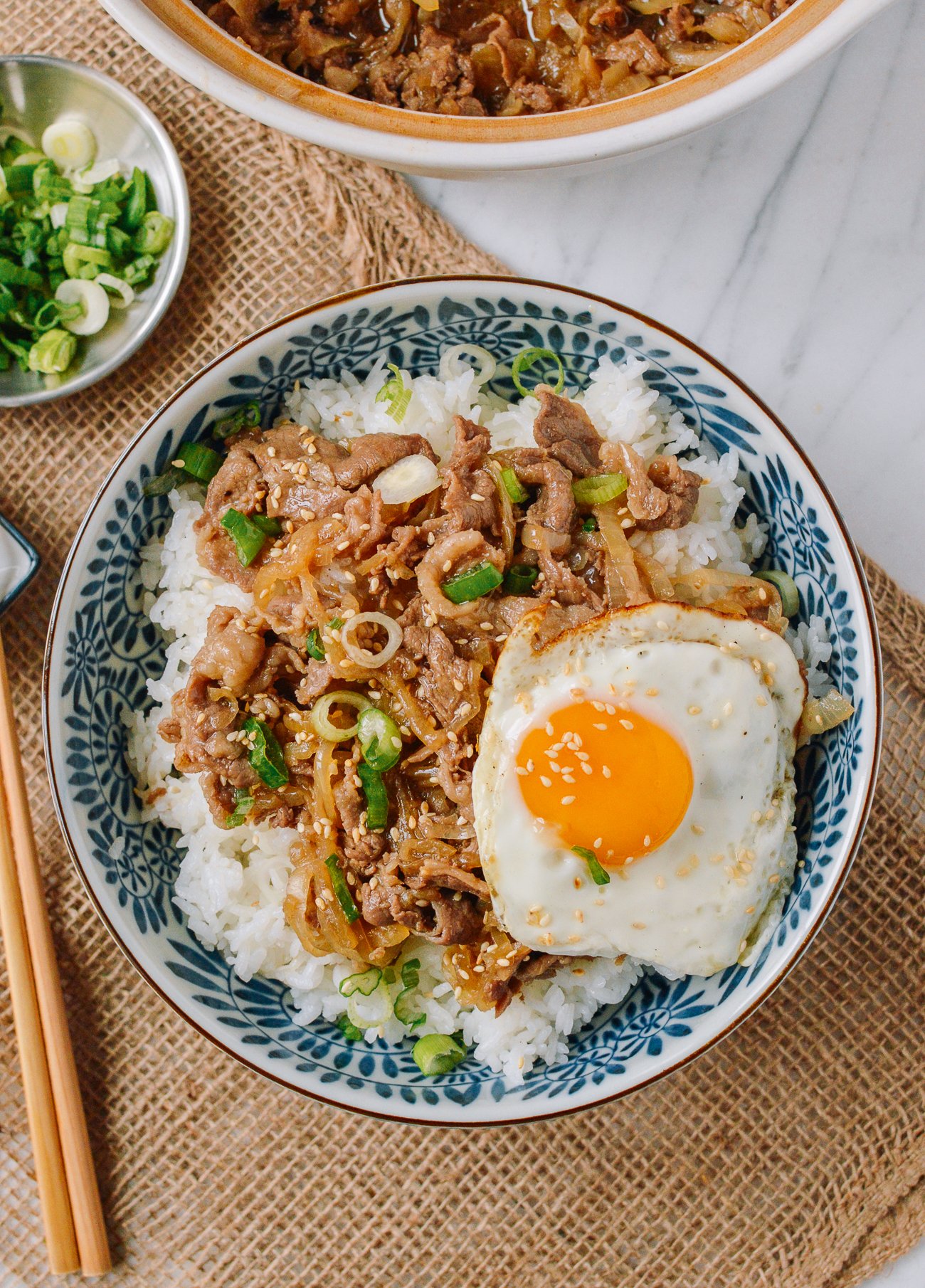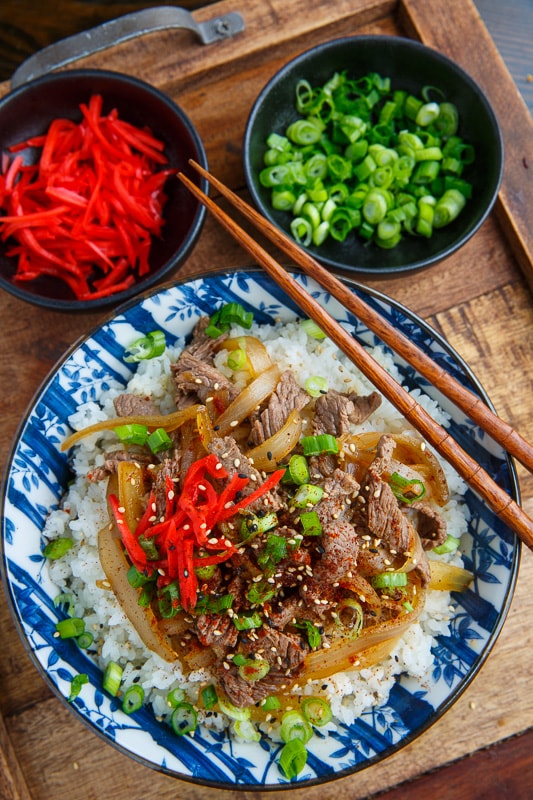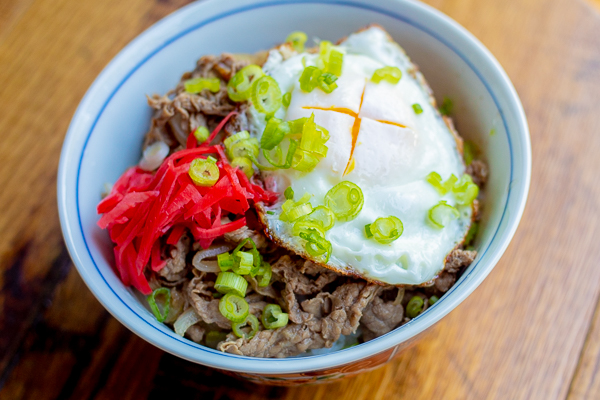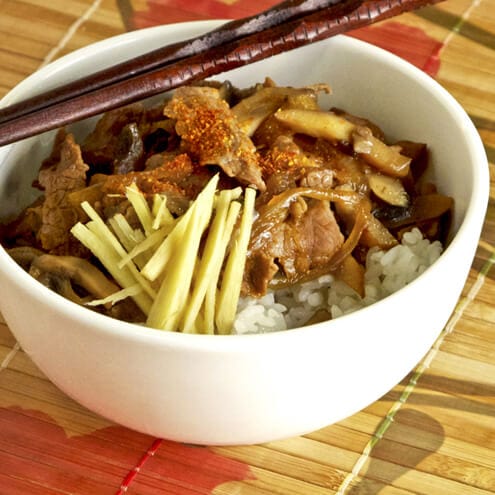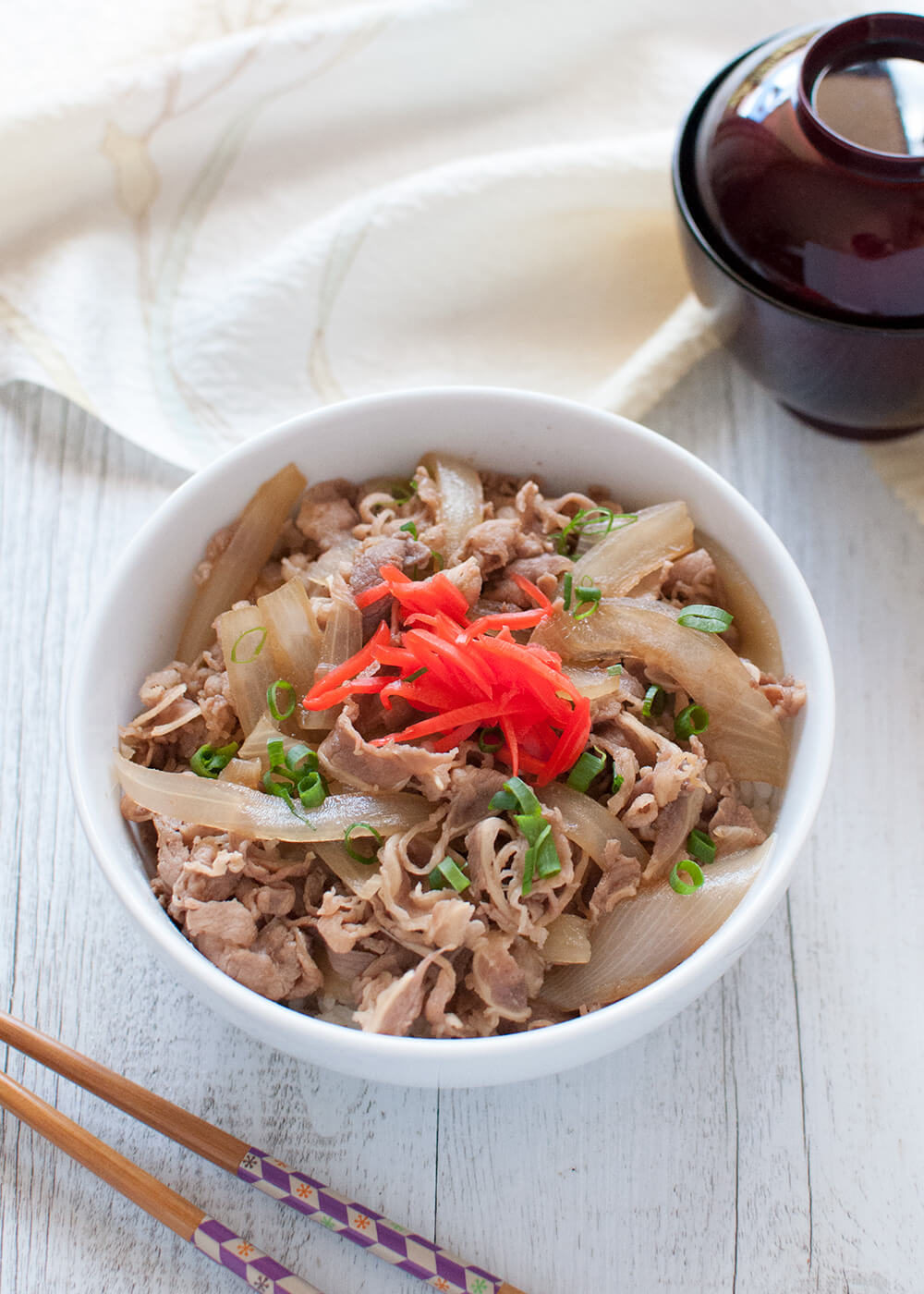Gyudon
gyūdon, 牛丼
Gyūdon , also known as gyūmeshi (牛飯 or 牛めし, "beef [and] rice"), is a Japanese dish consisting of a bowl of rice topped with beef and onion, simmered in a mildly sweet sauce flavored with dashi (fish and seaweed stock), soy sauce and mirin (sweet rice wine). It may sometimes also be served with toppings such as raw or soft poached eggs, negi onions, grated cheese or kimchi. A popular food in Japan, it is commonly eaten with beni shōga (pickled ginger), shichimi (ground chili pepper), and a side dish of miso soup. After the arrival of Buddhism in Japan in the 6th century, consumption of meat became rare in Japanese culture (especially those of four-footed animals such as cattle or pigs) and in many cases frowned upon, both for religious and practical reasons. It was only after the Meiji Restoration in 1868 and the subsequent westernization of the country that meat began to be widely eaten.
Source: Wikipedia
Recipes
Gyudon (牛丼) Japanese Beef Bowl - Tiger-Corporation
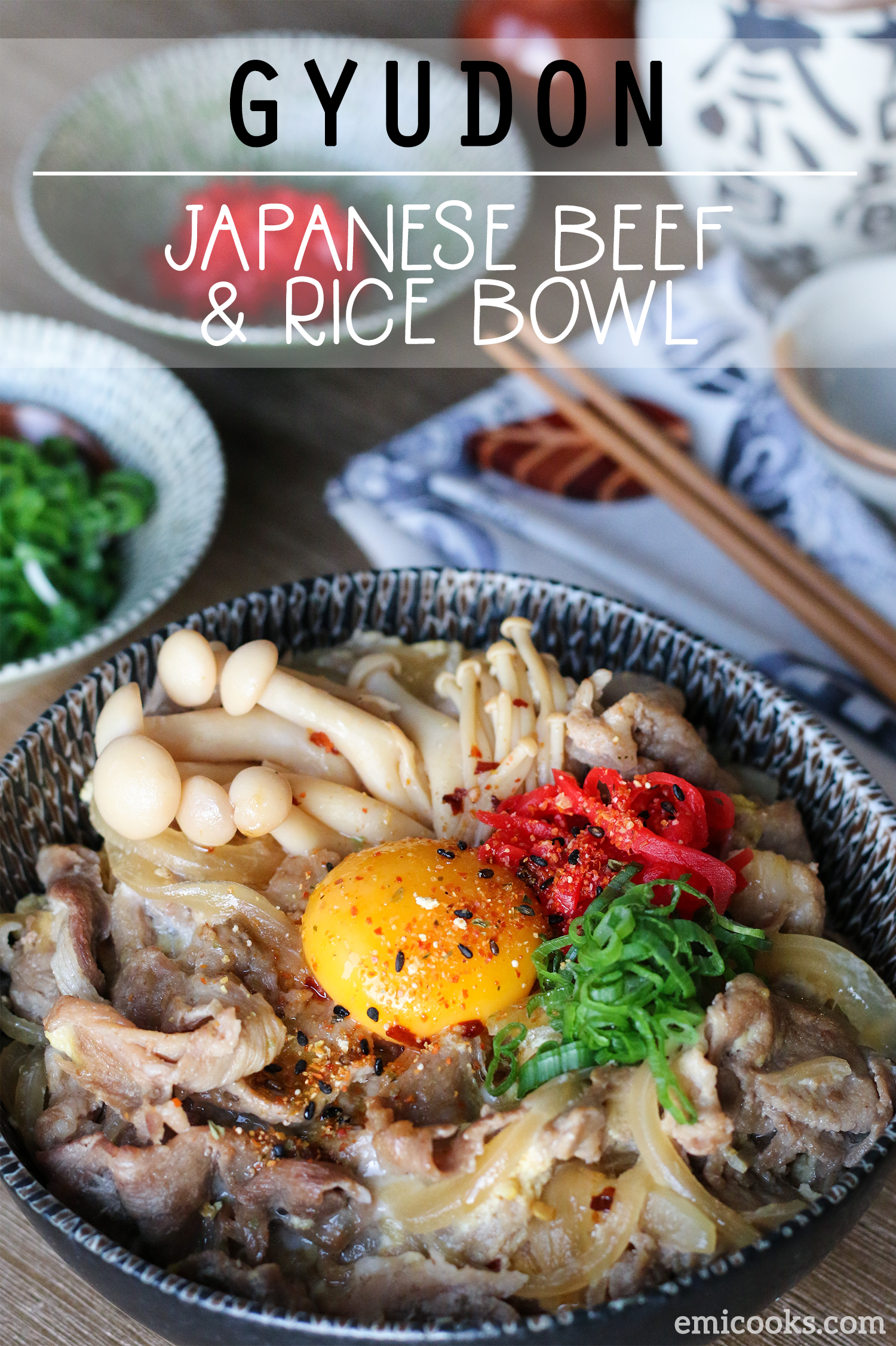
:max_bytes(150000):strip_icc()/gyudon-2030967-hero-01-b4089335c24a473196a1f6349761bd36.jpg)
:max_bytes(150000):strip_icc()/__opt__aboutcom__coeus__resources__content_migration__serious_eats__seriouseats.com__recipes__images__2016__07__20160711-gyudon-beef-rice-bowl-japanese-recipe-16-91997f708ebb4e6ba41514a13ff5b864.jpg)
